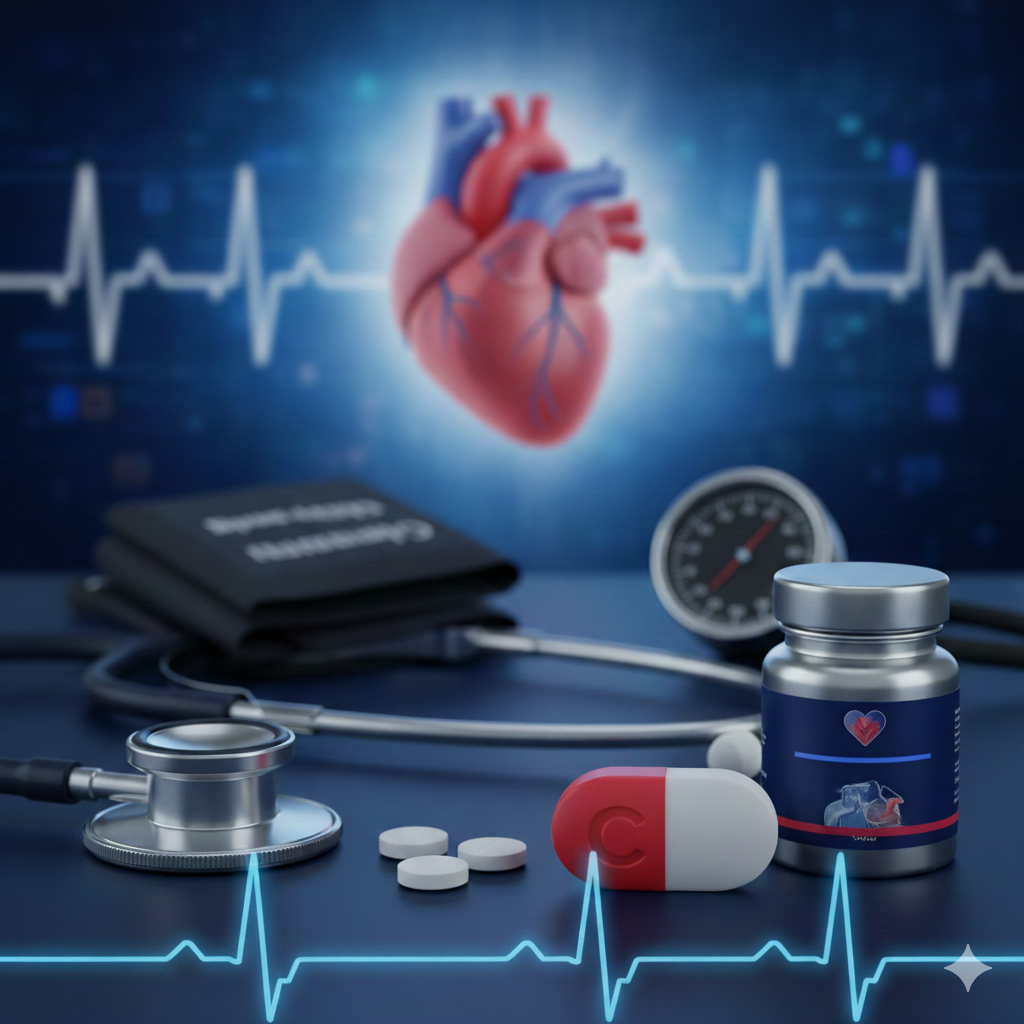What’s in My Patient? Pharmacology for Allied Health Professionals

Key Takeaways
- Allied health professionals play a key role in promoting better outcomes for patients, and pharmacological knowledge is essential for supporting clinical treatment.
- Side effects, drug interactions, pharmacodynamics, and pharmacokinetics are all important considerations for allied health workers as they develop care plans.
- Continuing education in areas like cardiovascular and psychotropic drugs equips allied health professionals with critical fundamentals about how these common medications impact their work.
Allied health professionals provide a wealth of valuable support services for mainstream clinical treatment, and the work they do demands a thorough understanding of each patient’s care plan. While injuries and illnesses are obvious factors for dietitians, physical therapists, and respiratory therapists to consider, pharmacology often has a significant impact on the recommendations they make and the help they provide.
Common medications like cardiovascular and psychotropic drugs are encountered in patients across all age ranges and demographics. Courses like Pharmacological Foundations: Cardiovascular Medications provide allied health professionals with a thorough overview of how these pharmaceuticals operate, clinical applications, and important safety considerations.
Here’s an overview of essential pharmacology for allied health professionals and guidance for how to manage common drug classes in your practice.
Understanding Mechanism of Action
The mechanism of action (MOA) refers to how a drug produces its effects at the molecular, cellular, or systemic level. In essence, it answers the question: “What does this drug do in the body to achieve its therapeutic goal?”
Most drugs work by interacting with biological targets such as:
- Receptors. Medications like beta-blockers bind to beta-adrenergic receptors to lower the heart rate.
- Enzymes. Statins inhibit HMG-CoA reductase to lower cholesterol synthesis.
- Ion channels. Calcium channel blockers can reduce cardiac contractility.
- Transporters. SSRIs block serotonin reuptake in the brain.
Understanding a drug’s MOA is vital because it helps predict both its therapeutic effects and potential side effects. For example, while opioids activate μ-opioid receptors to relieve pain, this same receptor activity in the brainstem can suppress respiration, leading to dangerous side effects like respiratory depression.
A firm grasp of a drug's mechanisms also guides clinical decision-making. Knowing that ACE inhibitors block the conversion of angiotensin I to angiotensin II explains not only their blood pressure-lowering effect but also why they can cause a dry cough (due to bradykinin buildup).
While allied health professionals like respiratory therapists don’t prescribe these medications directly, their role demands a solid understanding of how they impact the respiratory system of their patients.
Managing Potential Side Effects
No drug is completely free of side effects, the unintended or secondary effects that occur in addition to the desired therapeutic outcome. Side effects can range from mild (such as nausea) to severe (such as organ toxicity or anaphylaxis), and knowing the potential risk versus reward is an essential component of pharmacology for allied health professionals.
Side effects arise for several reasons:
- Lack of target selectivity. This occurs when a drug interacts with receptors or enzymes beyond its intended site of action.
- Dose-related toxicity. Higher concentrations may overwhelm detoxification pathways or saturate receptors.
- Genetic variability. Differences in metabolism or receptor sensitivity can alter drug responses among individuals.
- Drug interactions. When combined with other medications, some drugs can produce exaggerated or unexpected effects.
Clinicians must balance efficacy versus tolerability, often adjusting doses or switching medications to minimize adverse effects without compromising therapeutic benefit. As these changes occur, allied health professionals need to be aware of potential side effects and warning signs to alert colleagues and streamline care plans.
Caution with Drug Interactions
One of the most critical and potentially dangerous aspects of pharmacology is drug interactions. These occur when one drug affects the metabolism, absorption, distribution, or excretion of another, or when two drugs produce additive or opposing pharmacodynamic effects.
A few of the significant types of drug interactions include:
- Enzyme inhibition. Some drugs block certain enzymes, leading to increased levels of other drugs metabolized by those enzymes.
- Enzyme induction. This occurs when drugs speed up the metabolism of other drugs.
- Altered absorption or elimination. Medications such as antacids can reduce the absorption of certain antibiotics, while diuretics can alter renal clearance of medication.
- Additive effects. Some medications, when used concurrently, can have a stacking effect.
- Antagonistic effects. Medications that are antagonistic to one another can reduce the effectiveness of one or both.
Drug interactions have the potential to cause severe or life-threatening interactions quickly, and allied health professionals are often in a position to identify symptoms and behavioral changes.
Pharmacodynamics vs. Pharmacokinetics: Two Sides of the Drug Equation
While often used interchangeably, pharmacodynamics (PD) and pharmacokinetics (PK) describe different but complementary aspects of drug behavior.
Pharmacokinetics
Pharmacokinetics refers to how the body processes a drug, and can be summarized by the acronym ADME:
- Absorption. How the drug enters the bloodstream.
- Distribution. How it spreads through tissues and fluids.
- Metabolism. How a drug is chemically altered, mainly in the liver.
- Excretion. How drugs are removed, typically via the kidneys or the bile.
All of these factors impact dosing schedules, onset of action, and the duration of effect, and inform key considerations of pharmacology for allied health professionals. A dietitian, for example, may need to make specific dietary recommendations that account for medications that cause an upset GI tract, are absorbed more readily with food, or could benefit from specific nutritional support.
Pharmacodynamics
Pharmacodynamics describes a drug’s biological and physiological effects and its molecular mechanism of action. This includes receptor binding, signal transduction, and dose-response relationships.
This can become important for allied health professionals like physical therapists when drugs such as fluoroquinolone are administered. This antibiotic is associated with an increased risk for tendon ruptures, and therapeutic activities may need to be regulated to avoid injury.
Know What's in Your Patient
Pharmacology for allied health professionals is more than memorizing drug names; it’s about understanding how they interact with the body and each other to create better health outcomes. By mastering concepts like mechanism of action, side effects, drug interactions, and the PK/PD framework, healthcare professionals can deliver safer, more effective care.
Premiere is committed to helping allied health professionals deepen the impact of their work with a solid understanding of the effects of key classes of drugs. Courses like Psychotropic Medications: Pharmacological Foundations help healthcare workers in all roles understand the uses, effects, and clinical implications of these complex medications.
All of Premiere’s courses are developed by experts in their fields and help busy healthcare workers meet their professional obligations while developing their careers.
FAQs
What is pharmacology for allied health?
While most allied health professionals do not prescribe medications, they occupy many support, technical, and therapeutic roles that benefit from an informed understanding of pharmacology and its effects on patients in their care.
Do physical therapists learn pharmacology?
Pharmacology is a component of physical therapy training that provides critical insights into drug effects and interactions that affect rehabilitation and therapeutics. However, the field of pharmacology is constantly evolving, and continuing education is essential for maintaining up-to-date knowledge of best practices and new medications.
What is the relationship between nutrition and pharmacology?
Dietitians should have a thorough understanding of the medications their patients are taking in order to provide nutritional guidance that anticipates side effects, avoids potential GI issues, and supports overall health.
Latest Posts


.png)



